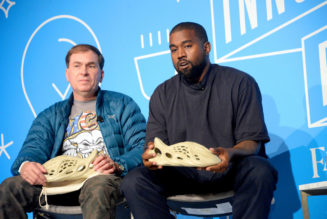Mugen is once again massaging one of Honda’s latest offerings—this time the global version of the Vezel model, known in the U.S. as the HR-V. If this mainstream subcompact crossover sounds like an odd object of desire for a longtime Honda tuner, Mugen went ahead and gussied up the low-power people mover anyway. American enthusiasts haven’t been sold on the HR-V, which essentially serves as the replacement for Honda’s beloved Fit hatchback in the U.S., so maybe it’s for the best that this new Vezel won’t translate directly to the next-gen HR-V due here soon.
The redesigned HR-V will be U.S.-specific, but what that means exactly is unclear. Whether or not it will resemble the global version or share enough mechanically to allow any of these new Mugen goodies to fit is still up in the air. It’s not uncommon for Mugen to offer multiple product lines that fit JDM Hondas and non-Japanese-domestic-market models, so there’s always that chance, however slim.
Honda’s Aftermarket Connection
This isn’t the first time Mugen has embarked on a catalog of visual and minor power-up changes for a non-performance offering such as the Vezel. The tuner has laid hands on the Odyssey, Fit, Insight, and other utilitarian models. The aftermarket brand works closely with Honda, given that its owner is the son of the automaker’s founder, Soichiro Honda, and it has a long history of being first to market with visual and performance enhancements for new H models. Many of Mugen’s late-1980s and ’90s performance, aero, and cabin accessories fetch big money on the enthusiast used market.
For the new Vezel, Mugen rolled out a host of aesthetic enhancements that certainly shape up the look of the new model with bolder, more pronounced lines which pack a little more visual heft onto the small SUV. It should be noted that Honda has developed its own optional parts list for the Vezel as well, which includes a subtle front lower valance and main grille, as well as side and rear garnish pieces.
Chin Implant
There is quite a bit going on with the factory Vezel front bumper, including a large, Accord Crosstour-esque upper grille opening with pouty lips surrounding a more traditional style lower grille. In factory form, that lower portion curves down and under the front fascia, while Mugen goes the opposite direction, squaring up the lower portion with a wrap-around bumper lip design. Essentially three layers stacked upon one another, the treatment does a much better job of defining the Vezel jawline and toughening up the front end. The upper grille opening remains but is broken up with a strike of black contrast courtesy of Mugen’s form-fitted cover that sits between the headlights and contours to the factory badge.
Along the flanks, Mugen designed four-piece side skirts that carry the front lip’s crease under the front door before being pinched and twisted into a similar line just below the rear door. The sizing is ideal when matched with the front lip and having one without the other would certainly throw off the balance. The side windows are laced with the brand’s aero vent visors, something they’ve incorporated into just about every one of their designs over the last decade (notably, they’re also among the most counterfeited Mugen parts).
Finishing Touches
Staying on track with the aero kit’s overall transformation is a rear valance that caps the rear bumper’s lower sides and completes Mugen’s lower body crease. Midway up the rear hatch, you’ll find a wing attached just under the window, while perched atop the roof’s rear, you’ll find one of two options: a mild add-on to the factory piece, or a slightly more aggressive spoiler that attaches just above the OEM third brake light, and relies on a pair of pedestals that are supported by the rear window.
Mugen’s wheel designs have changed dramatically over the past few decades. Once sharp and motorsport-inspired, Mugen is more focused on a modern, sometimes futuristic look, typically using machined finishes and a more OEM feel. As a matter of fact, the wheels developed for the Vezel look eerily similar to the factory rollers, only with an extra set of split spokes added in. They appear very heavy, yet the styling is soft, and they feel very much like an afterthought. If you’re a verified long-term Honda nerd, the rims will feel disappointing.
Bark With no Bite
Somewhat a letdown, but not at all unexpected, is a lack of true power upgrades. A dual-tip muffler is shown, which we assume is an “axle-back” exhaust setup, and Mugen reports an air intake system as well, but nothing that’s going to really wake the Vezel up, unfortunately. As global emissions restrictions tighten up, it’s no surprise that the ECU, camshaft, and even internal short block upgrades aren’t rolling out of the Mugen lab like the good ol’ days. Today’s Mugen is relying heavily on the average buyer looking to dress up their new purchase rather than the weekend warrior trying to wring out every ounce of performance from their Honda.
Whether that treatment proves in demand here or not will dictate whether it translates to accessories available for the U.S.-market version of the Vezel, the next HR-V. We’d say don’t count on it, but then again, it depends on how distinct the HR-V is from its global Vezel counterpart … Don’t hold your breath.Â
Sidenote
Mugen, “Unlimited,” in translation, was founded in the early 1970s by Hirotoshi Honda, son of Honda founder Soichiro Honda. Though the two brands work closely on aftermarket parts development and have a deep-rooted history of Formula 1 engine preparation and competition, motorcycle racing, and other motorsports, they remain entirely separate.









